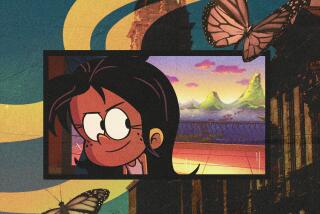Pocahontas Legend Hides Unromantic Realities : Cultures: Disney tale reflects current values more than historical truths, experts say.
- Share via
When Disney producers sought advice about how to portray the cartoon version of the flesh-and-blood Pocahontas, anthropologist Helen Rountree figured they wouldn’t be interested in what she had to say.
“For starters, Pocahontas was naked and bald when she first encountered John Smith. You wouldn’t want to put that in your film, would you?” Rountree asked Disney three years ago, when the project was still on the drawing board.
In Pocahontas’ day, pre-pubescent girls of her tribe generally had shaved heads and went about unclothed. One of the few historically reliable accounts of Pocahontas describes her turning stark-naked cartwheels around the settlers’ stockade, provoking the men inside.
It did not surprise Rountree, who teaches at Old Dominion University in Norfolk, Va., that once Hollywood had its way with Pocahontas, the wild child of the Chesapeake would be transformed into a buckskin-clad Barbie--doe-eyed, docile and utterly romantic.
Disney’s animated morality tale may sidestep the historical facts, but few parents would object to its message that nature is good, greed is bad and the impulse to make peace is a paramount virtue.
Yet as the legend of Pocahontas and John Smith resurfaces in popular culture as a politically correct, eco-friendly romance, it’s clear that this fractured fairy tale of the first encounter between English settlers and tribal people reveals much more about the desires, virtues and values of the present than it does about the past.
“Most of the natives of Virginia claim to be descendants of Pocahontas: there’s a reason for that,” said literary critic Diane Krumrey, who has done extensive research at Princeton University on the many ways the Pocahontas story has been told.
“Americans need to retell the story of the first contact between Euro-English settlers and Native Americans to make it a loving, interactive and mutually satisfying encounter,” she said, “to knit themselves into the landscape with a love story that would produce a true American progeny.”
In some ways the real-life Pocahontas--who ultimately was captured by the English, married to a colonist, baptized an Anglican, renamed Rebecca, dressed in elegant gowns and presented to London society as a “civilized savage”--was as much a cultural artifact as the legends that have grown up around her.
There is no real evidence, for instance, that Pocahontas saved John Smith from the wrath of her father. Most historians believe Smith fabricated the tale long after Pocahontas’ death to capitalize on her fame.
And although John Rolfe, the English widower who ultimately married Pocahontas and fathered her child, publicly professed his enduring love for the Indian princess, Rountree and Krumrey say theirs was essentially a marriage of political convenience, designed to usher in a period of peace.
“She became a real political volleyball,” Krumrey says of the historical Pocahontas, who died of smallpox at the age of 23.
Paula Gunn-Allen, a member of the Pueblo Laguna Sioux tribe and a UCLA professor of literature, sees some advantages to Disney’s retelling of the Pocahontas tale. But she, too, is troubled that Hollywood’s sexual stereotyping eclipses much of the power women held in native cultures.
“At least the little ones will learn that this group of people had an effect on colonial life,” said Gunn-Allen, author of several books on the spirituality of tribal women.
But her idea of a politically correct animated feature on Pocahontas is significantly different from Disney’s.
“I would set the movie in the village and I’d portray the settlers as they actually were--little, bitty white guys, filthy, because they never bathed, continually scratching themselves because of the lice they carried,” she says.
“The Indians, who bathed even their children every morning in cold water, would reach out a helping hand to these derelict, disease-ridden and homeless boat people.”
Gunn-Allen’s imagined film would go further than Disney’s, which ends as Pocahontas and Smith are parted, to face separately an uncertain future.
She would examine the year Pocahontas spent locked in a dungeon in the English stockade, then look critically at the life she lived in London and her conversion to Christianity.
“In the end, I wonder if she ended up a happy Christian. . . ,” Gunn-Allen said. “It’s unclear whether she ever really wanted to be baptized. She is silent on this, because she wasn’t writing the history of her own life.”
More to Read
Only good movies
Get the Indie Focus newsletter, Mark Olsen's weekly guide to the world of cinema.
You may occasionally receive promotional content from the Los Angeles Times.







